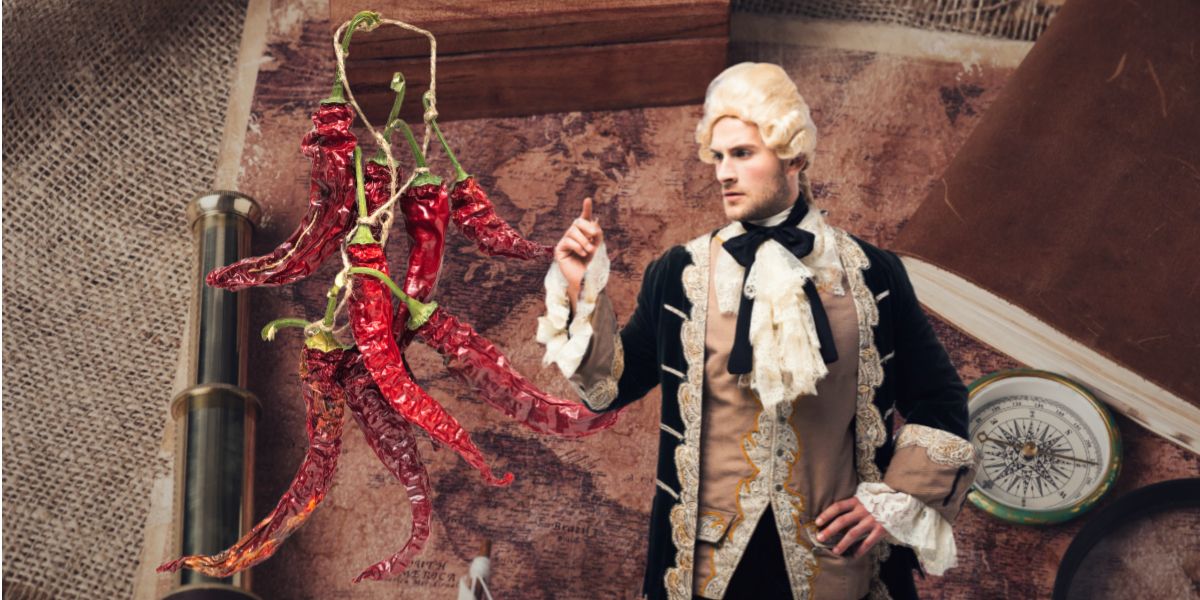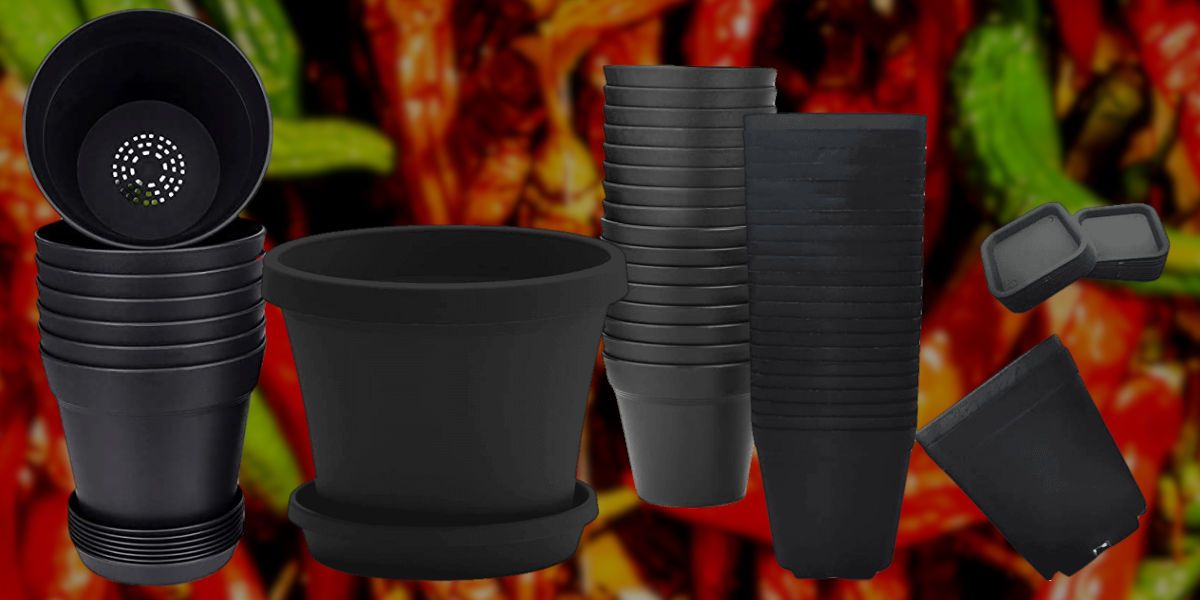What Is The History Of Chili Peppers?

In this article, I present a short history of chili peppers.
I have been growing chili peppers for many years. Currently, I am researching all aspects of the plant to increase my understanding of how to grow it. Inevitably to understand how to grow chilies, it is essential to understand the history of the plant.
The origins of chili peppers
The origins of chili peppers (Genus Capsicum) are most likely in the lowlands of Brazil in South America. The first peppers growing in this region were small round red fruit that resembled berries. It is believed that this region is the place where chilies originate because it is the place on the globe with the most extensive collection of wild species of chili pepper.
Birds around the region have subsequently spread the wild chili pepper plants from the Northern part of South America to Central America. The plants have most likely evolved to favor birds for dispersing their seeds.
Are you a chili pepper lover who wants to learn how to grow chili pepper plants at home? Look no further! Click below to find out which must-have books will guide you through the process of growing your own chili peppers...
The ripe red pods are easy for birds to remove from the plant. But, when the pods are still green, it is much more difficult for birds to snatch them. In this manner, the chili pepper plants ensure that only the viable seeds get ingested and subsequently spread by the birds.
Birds also do not feel the burn from the hot pepper fruits, as opposed to most mammals. Furthermore, the digestive system of birds does not harm the chili seeds. On the other hand, the burning sensation of the capsaicin in the peppers deters mammals from eating the chili fruit.
The first human use of chilies
The first known human uses of chili peppers date from around 6000 years ago. Archeologists who were studying the ancient remains of cooking utensils in Ecuador determined this.
Chili peppers became an essential part of the ancient Mayan and Aztec cultures that lived in what we today call Mexico. These people used chili fruits in cooking for a wide range of dishes but also for medicinal purposes. Mexican tribes had taken wild chili pepper plants and domesticated them. The name 'chili' comes from the ancient Aztec language.
The original chocolate drink enjoyed by the ancient Mexican tribes also had ground chili peppers as an ingredient to spice it up.
Some wild varieties of chili peppers were found as far north as Texas and the Southeast United States. These have possibly been spread by birds but may also have been spread by humans as native American trade routes existed from Mexico and Northwards.
The arrival of Columbus
When the European explorer Columbus came to the Americas in the late 15th century, he looked for a new route to travel to India. At that time, India was the place that produced black pepper.
Columbus did not find any black pepper in what he thought was India when he came to America. Yet, in the colony of Santo Domingo (today called the Dominican Republic), he was introduced to chilies by the natives. He named them peppers as they were also hot and spicy like the black peppers.
Columbus brought some chili peppers back to Spain, together with other foods and plants found in what was considered to be the New World.
In addition to Spain, other countries started to explore the Americas. Especially the Portuguese traders were active in the spreading of chili pepper plants around the world. The result was that in other places where the chili plants could grow well, they flourished.
The path of the chili trading was first from the Portuguese colonies in Central America to Southern Europe. Then, as the Portuguese explorer Vasco da Gama discovered a route from the Atlantic Ocean to the Indian Ocean via the Cape of Good Hope, a new path emerged for the chili peppers to spread once again. This time to India and Eastern Asia.
The spread of chilies to India
Botanists thought for many years that the chili plant was also native to India and Eastern Asia. Still, research has shown, as mentioned, that the true origins are in Brazil and Mesoamerica.
There is a significant presence of chili plants in India and Southeast Asia, but these plants were originally brought there by merchants. The chilies thrive in these places due to the excellent environmental conditions in which the plants can grow.
Portuguese merchants brought chilies from their colony in South America, Brazil, to their settlement in India, Goa, at the beginning of the 16th century.
Goa was already located in an area where spices were omnipresent. The local cooks in Goa quickly incorporated the chilies into their dishes with great success. Since then, the chili pepper cannot be seen apart from Asian cuisines.
When the Dutch and British started their colonial adventures to challenge the Spanish and the Portuguese around the 1660s, domesticated chili peppers spread even more around the globe.
The spread of chilies to China
It is not known precisely how chilies came to China. There are essentially two likely routes.
The first possible route is the one the Portuguese traders used to travel to Malacca and Indonesia from various locations in the Indian Ocean. The other possible route is one used by Spanish merchants traveling from Acapulco in North America to Manilla in the Philippines.
The chilies that the Portuguese and Spanish brought along with them were not for large-scale cultivation, nor were they meant to be a commodity. Instead, they were for personal consumption on the ships, and some people decided to plant the chili pepper seeds in the place they stayed once they got back on land.
Given that Chinese merchants were traveling all over the region, it is very probable that they encountered chilies in both Indonesia and the Philippines. From there, these merchants brought the chilies back to China.
Chilies start showing up in Hangzhou in the late 16th century. Yet, they seem to be rather unpopular with the elite, except as ornamental plants. The elite preferred other crops like peanut, potatoes, and maize due to their high caloric value. These crops also get planted in places where rice is unable to grow, with the goal of feeding the population.
In the late 18th century, chilies nevertheless start appearing in Chinese cooking recipes. From then on the hot peppers have become a permanent part of Chinese cuisine. Today, chilies are close to being considered a national identity crop.
New Mexico is the primary chili producer in the U.S.
Chili peppers were already being grown by the native Pueblo Indians in North America before Columbus arrived in the Americas. A domesticated chili species had most likely spread there through trade between the Pueblo natives and the Toltec people of Mexico.
Since then, the same chili peppers have been grown by small farms throughout the state. On the other hand, the large-scale farms have switched to new varieties that are more interesting from an economic point of view.
At the beginning of the 1900s, a horticulturist named Fabian Garcia bred a new variety of chili pepper. He gave this chili pepper the name New Mexico No.9. The advantages of this variety are that it produces chili fruits of regular size, shape and the heat is reasonably stable. This chili variety was a big success because it allowed farmers to cultivate an actual cash crop.
Nowadays, many popular chili varieties have been bred in New Mexico. Especially the chili breeding program by the Chile Pepper Institute of the New Mexico State University has produced some exciting types. Some examples are NuMex Big Jim, NuMex Sandia and NuMex Española Improved.
Apart from the varieties bred locally, well-known varieties like Jalapeños, Cayenne, and Paprika are also grown on a large scale in New Mexico. Due to the popularity of Mexican cuisine in the United States, the production of chilies in New Mexico will remain a multi-million industry for many years to come.
References
https://www.legalnomads.com/history-chili-peppers/
https://cpi.nmsu.edu/for-kids/the-story-of-chile-peppers/
http://ushotstuff.com/history.htm
https://www.villapalmarcancun.com/blog/dining/history-chilies-mexico
https://heated.medium.com/how-did-chile-peppers-get-to-china-9b12ca7a6159



